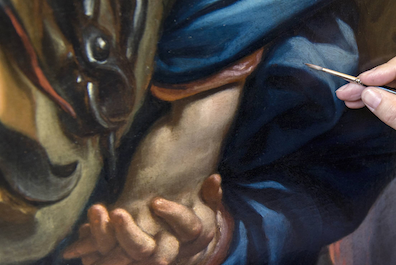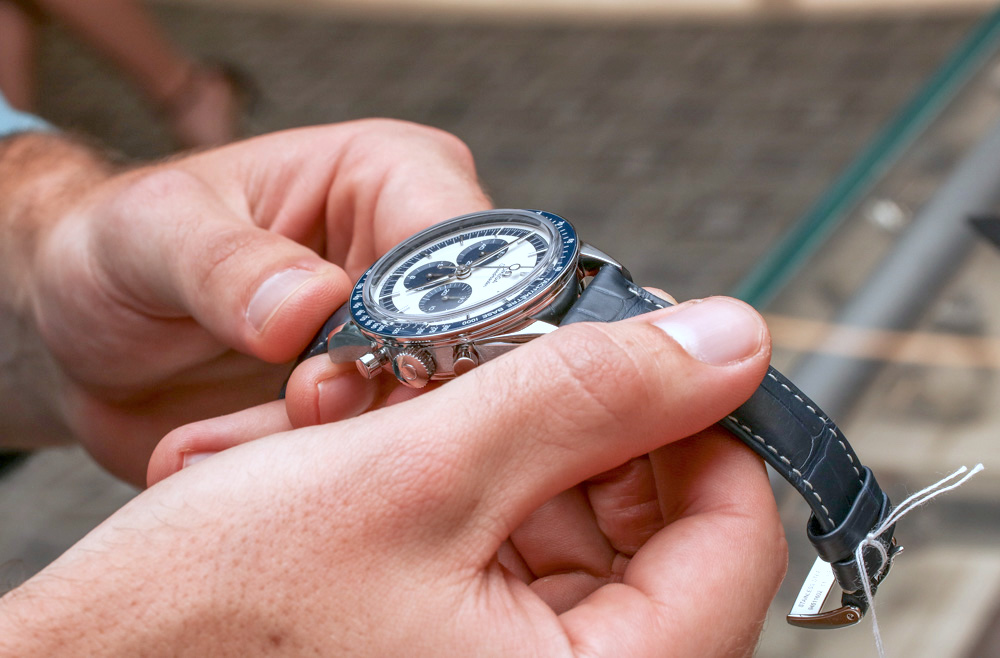
Stemming from the Italian miniatura meaning ‘manuscript illumination or small picture’, portrait miniatures first appeared in European royal courts in the 16th Century and later blossomed during the reign of Elizabeth I.
In the 15th Century, Portrait miniatures first appeared in illuminated manuscripts and later artists Hans Holbein the Younger (1497-1543) and Lucas Horenbout (1490-1544), both adopted the same techniques used to produce small independent portraits on vellum.
Throughout 16th and 17th Century Europe, these new works of art were labelled ‘limmings’ and the term ‘miniature’ did not apply to these until the 18th Century. Miniatures were especially sought after by soldiers and sailors who, often spending long periods of time away from their loved ones, wanted to leave a likeness for them to cherish in their absence.
The early 18th Century is known as the ‘Golden Age’ of portrait miniatures and saw the development of two main techniques, ivory and enamel. Due to its luminosity, ivory was regarded as a better support for depiction of flesh tones than vellum, creating a more matte finish. The preparation process was much less complex than required for vellum, making it a popular choice in the painting of miniatures. Also in the 18th Century, enamel was seen as a more popular alternative to ivory; painted onto gold or copper, these depictions were fired in a kiln and a great level of skill and time was required.
In the higher echelons of 16th and 17th Century European society, miniatures served primarily as diplomatic gifts, exchanged in marriage negotiations, and to commemorate births and deaths. By the 18th Century, miniatures were often worn as jewellery, set into a ring or set on a gold chain around the neck. Sometimes they would contain a lock of hair sealed inside. Wealthy individuals would commission portrait miniatures with ornate embellishments, often made of gold and set with pearls and diamonds. Sometimes the embellished setting was considered more important/valuable than the portraits themselves.
Artists in the 18th Century who created miniatures include Richard Cosway, who in 1775 was appointed Painter to Prince of Wales and commissioned by many members of the British royal family. Another 18th Century artist Henry Bone R.A. produced the largest enamel paintings to be seen up to that time. His works were large enough to be hung on the wall rather than worn as a piece of jewellery, like many were at the time.
In the early 19th Century, there was a decline in demand for portrait miniature making largely due to the invention of photography. Whilst these two disciplines briefly co-existed in the form of overpainted photographs, photography could be created more quickly and economically and no longer needing the skill or a portrait painter.
When collecting portrait miniatures, it is important to note than not all are signed, however those that are not are still considered autograph works. One therefore should not be put off by the absence of a signature, although, along with date and inscription, they can help one know more about the artist, sitter, and date of execution. In the absence of date, the hairstyle and dress worn by the sitter are invaluable clues in the identification process.
When it comes to inspecting condition of a miniature, all collectors should look out for mould which often occurs when the piece has been stored in a damp or humid place. If left untreated mould can spread and rapidly deteriorate the piece, so it is therefore important to store miniatures in a dry stable environment.
As with any work of art and category of collecting, there are multiple factors that will influence the price of the work. These include the identity of the sitter (historical or royal sitters sell better than unknown sitters); whether it is by leading artist of the day; condition of the piece; its provenance.
The most important thing for someone starting as a collector, however, is to buy what is most meaningful to them. A person might find a portrait miniature appealing for aesthetic reasons or from a specific period of history that is of interest to them. Whatever the reason, as with any collecting of art works, it is important to have a connection with the piece itself.




